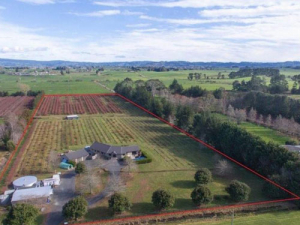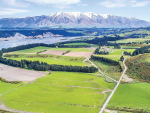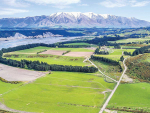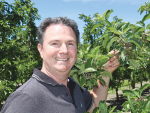More farms have been changing hands in recent months, according to the Real Estate Institute of NZ (REINZ).
A REINZ report released this month shows there were 20 more farm sales (+6.3%) for the three months ended November 2018, compared to same period last year.
Overall, there were 336 farm sales in the three months ended November 2018, compared to 263 farm sales for the three months ended October 2018 (+27.8%), and 316 farm sales for the three months ended November 2017.
It says 1,486 farms were sold in the year to November 2018, 5.9% fewer than were sold in the year to November 2017, with 11.2% less dairy farms, 2.8% fewer grazing farms, 3.2% less finishing farms and 12.6% fewer arable farms sold over the same period.
The median price per hectare for all farms sold in the three months to November 2018 was $30,411 compared to $26,802 recorded for three months ended November 2017 (+13.5%). The median price per hectare rose 12.1% compared to October 2018.
The REINZ All Farm Price Index rose 3.6% in the three months to November 2018 compared to the three months to October 2018. Compared to November 2017 the REINZ All Farm Price Index rose 2.5%. The REINZ All Farm Price Index adjusts for differences in farm size, location and farming type, unlike the median price per hectare, which does not adjust for these factors.
Half of 14 regions recorded increases in the number of farm sales for the three months ended November 2018 compared to the three months ended November 2017. Wellington (+14), Manawatu/Wanganui (+9) and Otago (+8) were the top regions to increase the number of farm sales compared to November 2017. Canterbury recorded the most substantial decline in sales (-13 sales) followed by Northland (-3 sales). Compared to the three months ended October 2018, 10 regions recorded an increase in sales with the biggest increase being in Waikato (+32 sales).
Brian Peacocke, Rural Spokesman, at REINZ says climatic conditions during November 2018 continue to benefit most of the rural sector with widespread rain and warm temperatures creating abundant pasture growth across the country.
“However, heavy rain and high humidity are causing grief within segments of the horticulture, arable and vegetable growing sectors, viz; cherry damage in Central Otago, difficulty with grain crops in some regions, and as a result of an unseasonal hailstorm, the total obliteration of a large asparagus crop in central Waikato.
“Sales data for November 2018 compared to the same periods in 2017 and 2016 reflects an increase in volume for the finishing category, but reductions in the dairy, grazing and arable categories. Horticulture improved from 2017 but was down 28 % on November 2016. Forestry remained relatively stable.
“Reports from the regions confirm significant numbers of properties being available for sale during the spring, particularly dairy farms, this being an indication of a mix of factors; viz, age and stage of property owners; increasing charges; costs relating to compliance and labour; dissatisfaction with a milk processing company, and in some quarters, frustration with the perceived lack of empathy emanating from central government.
“Within this unsettled environment, sheep, beef, arable and horticulture properties have continued to create good demand and sell well. By contrast, perhaps as a result of vendor expectations and the reduced confidence amongst some purchasers, a number of dairy farms have failed to sell,” he says.











